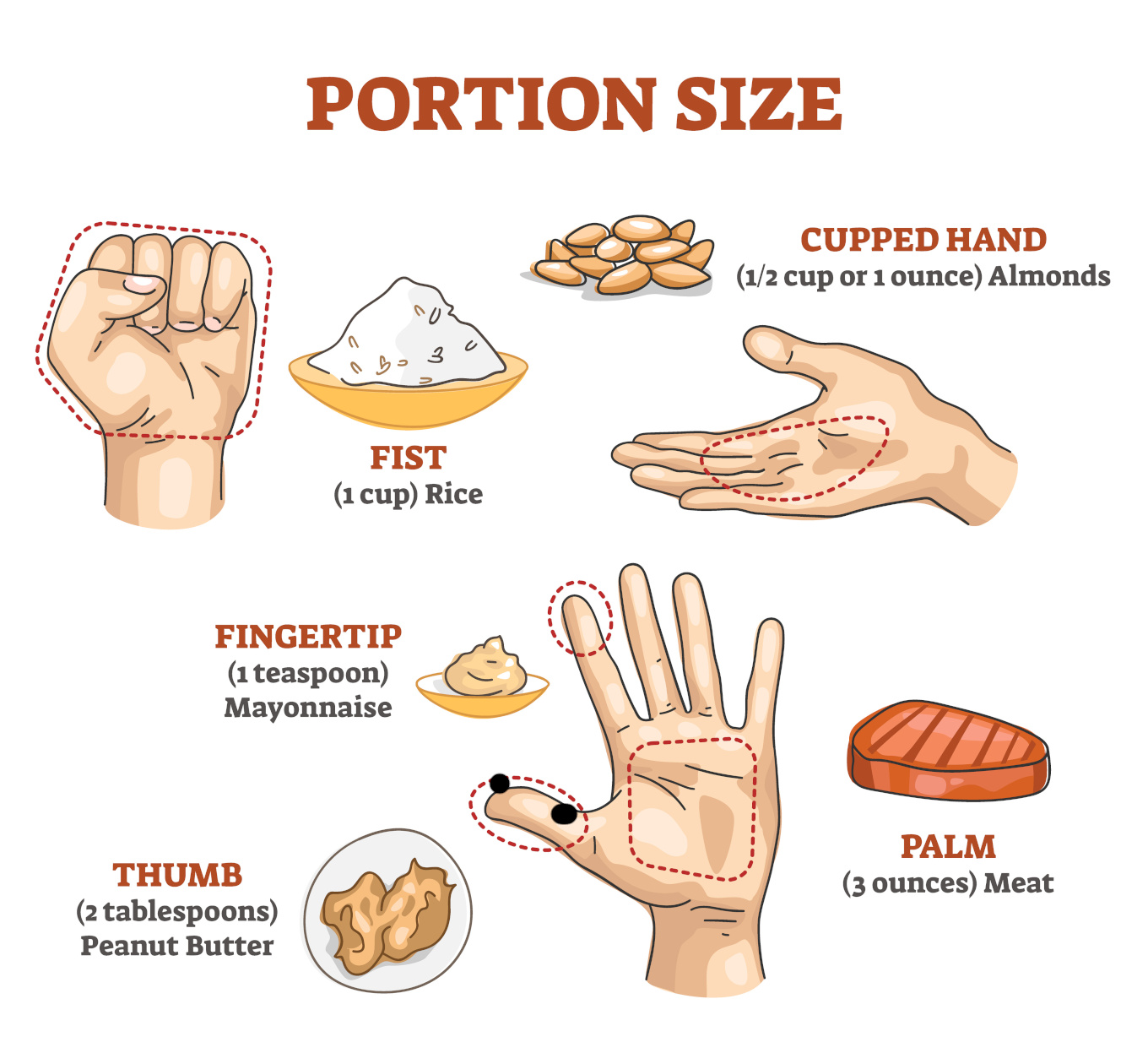Understanding how to calculate portion size

If you are new to logging or have been at it for a while, you may have wondered about the best way to measure or calculate portion size. A key aspect of tracking is accurately determining how much food and drink you’ve consumed.
If you don't measure your portions, you’ll often underestimate how much you are taking in. If you are trying to lose weight, this can lead to frustration and a lack of progress. Figuring out portions of commonly consumed foods, such as bread or crackers, where the serving size is listed on the package, is straightforward. However, what about figuring out portions of pasta, meat, peanut butter, and oils?
This article delves into the details of calculating the portion size of foods and drinks, with specifics around weighing, measuring, and estimating food portions for weight loss.
How to calculate portions with accuracy Weigh your food!
Weighing is the most accurate way to measure or calculate portion size. You can purchase a kitchen scale at most big box stores or online. We suggest investing in a digital scale as opposed to an old-fashioned spring-loaded scale. The digital scales are easier to use and more accurate. With a digital scale, you can easily zero out the weight of the container as well as select different units of measure (e.g. grams, ounces, etc.). Serious about losing weight? Check out MyNetDiary and start weighing your food!
Measuring volume- Use measuring cups & spoons
Another approach to calculating portion size is to use measuring cups and spoons or a glass measuring cup to determine volume (e.g., cups, fl oz, ml, etc.). These items can be purchased at big box stores or online.
Using a measuring cup designed for liquids is easier, more accurate, and less messy. See below for an example of this type of measuring cup.
When measuring the volume of a solid (e.g. flour, cereal, etc.), you can use standard measuring cups (if measuring weight is not an option). Level off the contents with the flat side of a knife to get an accurate measurement. Use metal or plastic measuring cups, whichever you prefer. Standard measuring cups look like those shown in the photo below.
You can use measuring spoons to measure very small amounts of liquids or solids. Level off solids with the flat side of a knife. Use metal or plastic measuring spoons—whichever you prefer. They look like the ones shown in the photo below.

Buy several sets of measuring cups and spoons. That way, you always have one clean and ready for measuring.
Estimating portion size
If you have already started recording your intake, then you know how difficult it is to estimate portion size. MyNetDiary created a Portion Guide to aid in the process. Look for the open book icon (see example below) when tracking to access the guide.
Tip: Metric system is available for weight, length, and volume measurements.


For more help estimating portion size when you cannot measure, check out the Serving Size Card from the National Heart, Lung, and Blood Institute. This card displays portion size using familiar objects. Also, visit WikiHow for more helpful visual representations of portion size. See below for a quick summary.